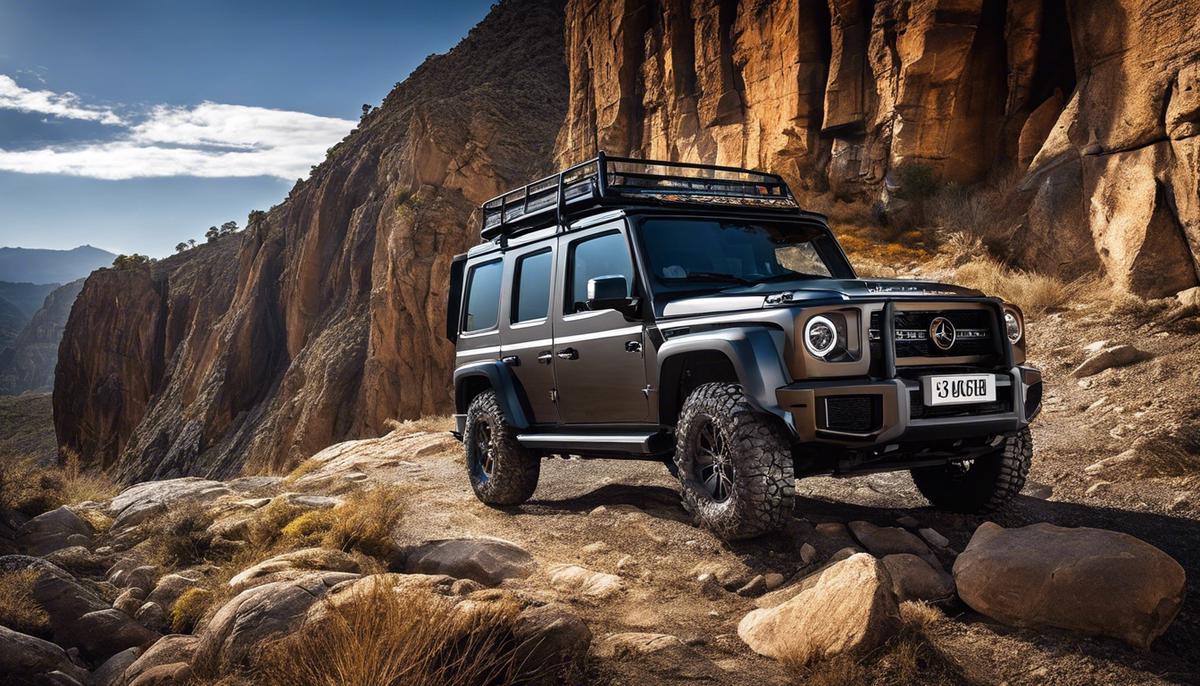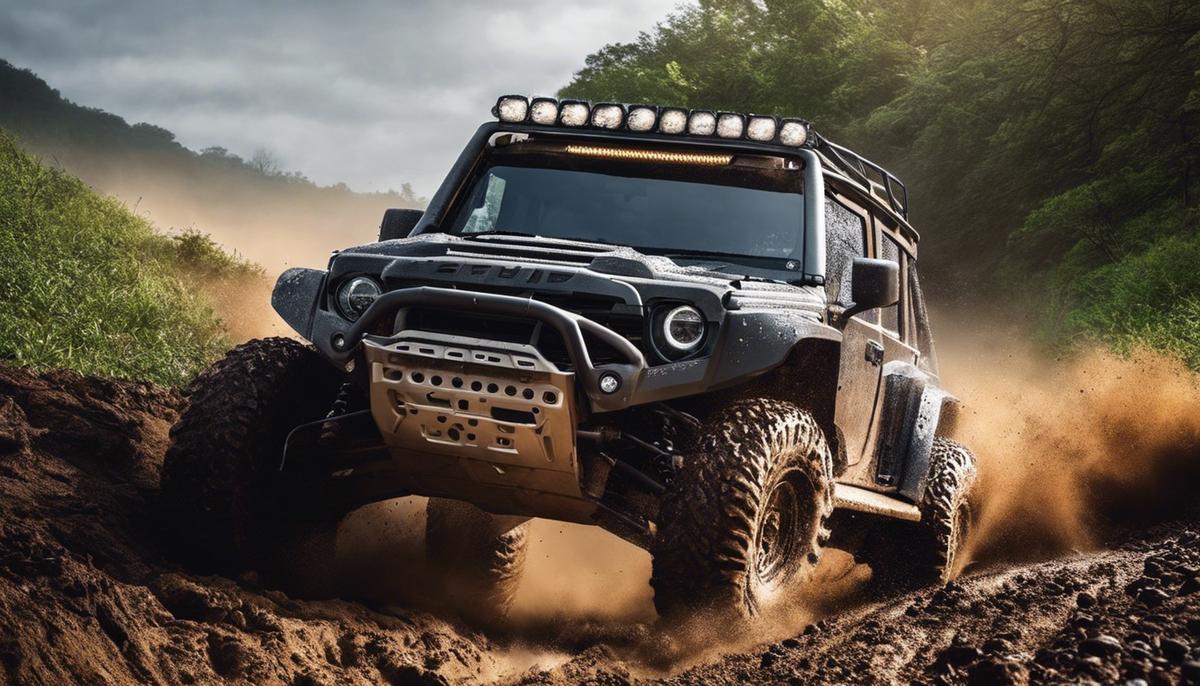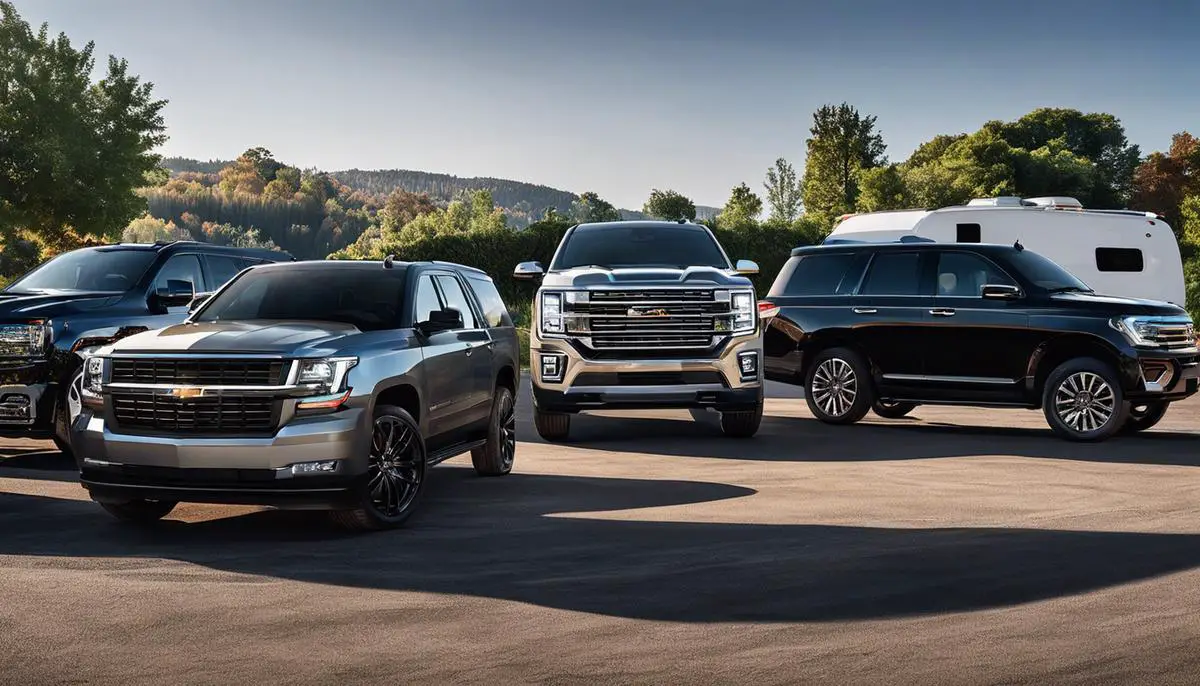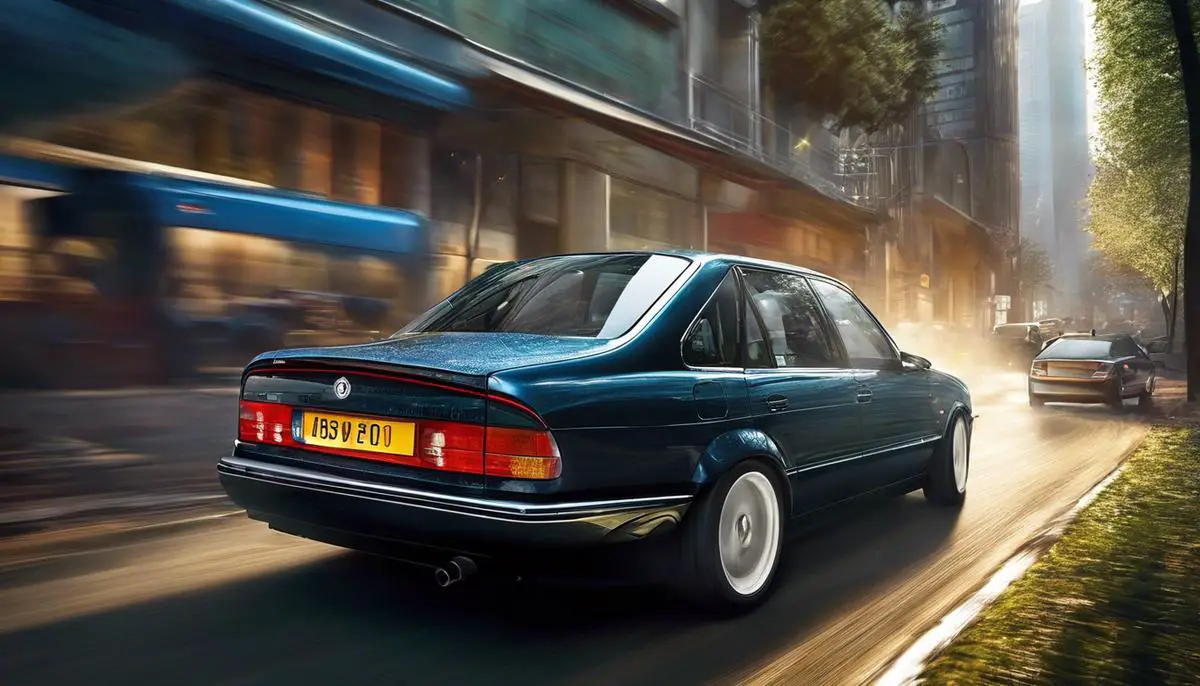When adventure calls and the beaten path is no longer an option, the allure of off-roading beckons the intrepid at heart. Yet, the decision to veer off paved roads is not one to be taken lightly, and the capability of one’s vehicle plays a pivotal role in this journey. In this pursuit of rugged exploration, certain specs become the yardsticks of a vehicle’s ability to conquer untamed landscapes. This essay delves into the vital features that set the off-road warriors apart from their urban counterparts. From understanding the critical importance of ground clearance and approach/departure angles to considering the nuanced differences between 4WD and AWD systems, this discussion paves the way for evaluating a vehicle’s off-roading viability. Additionally, the choice of suitable tires and robust suspension systems are dissected to further comprehend their indispensable contribution to achieving off-road prowess. Strap in as we embark on an educational foray into what makes a vehicle not just capable, but exceptional, when the road disappears and the adventure begins.
Ground Clearance and Approach/Departure Angles
Ground Clearance: Why It’s Critical for Off-Road Adventure
When it comes to conquering the rough and untamed terrains of the wild, the ground clearance of your off-road vehicle is not just a feature, it’s a lifeline. For enthusiasts who thrive on navigating through rocky paths, muddy ruts, and steep inclines, understanding ground clearance is as essential as the air we breathe. So, why does this single measurement command such respect among off-road aficionados? Let’s dive right in.
Firstly, ground clearance is the distance between the lowest point of the vehicle (excluding the wheels) and the ground. It’s the buffer that keeps the undercarriage, including vital components like the oil pan, transmission, and exhaust system, safe from being mauled by unforgiving terrain.
Higher ground clearance equates to better ability to traverse obstacles: think massive rocks, logs, or uneven ground. Vehicles that sit lower are more prone to getting hung up on these challenges, leading to potential damage or getting stuck—two scenarios no off-roader wants to face mid-journey.
Furthermore, ground clearance affects the approach angle, the departure angle, and the breakover angle—critical angles determining how a vehicle can approach, crest, and leave obstacles without scraping or getting caught. A generous approach angle allows the front of the vehicle to climb up and over an obstacle smoothly. Similarly, the departure angle ensures the back of the vehicle clears obstacles without damage. The breakover angle is crucial when cresting a hill or obstacle, preventing high-centering, where the vehicle rests on its underbelly, wheels helplessly dangling in the air.
Here’s where it gets a bit technical—but hang in there. In off-roading, traction is king. However, suspension travel, which allows the wheels to maintain contact with the ground, also factors into how well a vehicle handles rough terrain. Ground clearance must be balanced with this to ensure the tires can articulate and grip effectively without being so high that the vehicle becomes top-heavy and rolls over.
For those modifying their rides, be cautious. Lifting a vehicle for greater clearance affects its center of gravity. While creating more space underneath is beneficial, increasing the vehicle’s height too much without proper counterbalance through wider axles or lower tire pressure could spell a rollover in challenging conditions.
Selecting an off-road vehicle or upgrading an existing one? Always consider what kind of terrain it will be facing. For rock crawling, a generous ground clearance and skid plates are your best friends. For less challenging terrains like light trails and graded paths, a moderate lift might be all you need.
In conclusion, ground clearance isn’t just a number—it’s an essential trait that defines the capability of an off-road vehicle. Without adequate clearance, every journey could turn into an exercise in recovery rather than the thrilling exploration of nature’s finest. Choose wisely, equip accordingly, and enjoy the adventure that awaits beyond the paved road.

4WD or AWD Systems
When venturing off-road, having the right ground clearance is only one piece of the puzzle. To truly conquer challenging terrain, a vehicle’s drivetrain plays a critical role. This is where 4WD (Four-Wheel Drive) and AWD (All-Wheel Drive) systems come into the spotlight as game-changers for off-road performance.
So, how do these systems enhance a vehicle’s capability when the pavement ends? Let’s get our wheels spinning and dig into the nitty-gritty!
Firstly, 4WD systems are typically found in dedicated off-road vehicles. They feature two differentials – front and rear – along with a transfer case. This setup allows power to be sent to all four wheels simultaneously, which is invaluable for maintaining traction on uneven, slippery, or loose surfaces. The ability to engage 4WD manually means drivers can strategically use this power on-demand, especially where maximum torque is critical, like crawling over rocks or tackling steep inclines.
Now, for those vehicles equipped with a 4WD Low (4Lo) gear, this feature further enhances off-road capability by reducing the gear ratio. In layman’s terms, it increases torque at the wheels while decreasing the vehicle’s speed without needing extra throttle. This controlled power is perfect for precision maneuvers and easing over obstacles without the risk of wheel spin or sudden jolts.
Switching gears to AWD, this system’s magic lies in its ability to automatically distribute power among the wheels. Unlike 4WD, AWD runs full-time and uses a center differential along with the front and rear ones. This center diff allows for variance in the wheel speed, making it a power balancing wizard. When one or two wheels lose grip, an AWD system can redirect torque to the wheels still in contact with terra firma, maintaining forward momentum and stability.
An important distinction is that some AWD systems are designed with a front or rear bias, which means they predominantly power either the front or rear wheels until slippage is detected. Once it kicks in, the system adjusts the power split to ensure all wheels are pulling their weight, quite literally.
For off-road aficionados who relish time spent on muddy trails, sandy dunes, or snowy paths, these drivetrain systems are the secret sauce. With AWD or 4WD, tires can sink their treads into the surface with confidence, all while the drivetrain manages torque distribution like a seasoned conductor, ensuring the show goes on, no matter how rugged the stage.
In conclusion, it’s clear that 4WD and AWD systems are vital cogs in the off-roading machine. While ground clearance positions a vehicle to conquer obstacles, it’s the symphony of power and traction made possible by these drivetrains that truly transforms off-road performance from good to legendary. Happy trails and tread lightly!

Tires and Suspension
Shifting our focus to the underpinnings of any off-road adventurer, tires and suspension systems play pivotal roles that cannot be overstated. Tires are what connect a vehicle to the ground, and they need to be able to grip a variety of surfaces and respond to a diverse range of conditions. Suspension, on the other hand, is the cushioning champion that absorbs shocks from uneven terrain, allowing for a smoother ride and reducing the risk of damage to the vehicle.
Tires designed for off-roading are vastly different from those meant for highway use. They are typically larger, with deep treads and reinforced sidewalls to withstand sharp rocks and grip soft surfaces like mud and sand. The pattern of the tread on off-road tires is important, as it determines traction, mud-clearing capability, and the tire’s ability to distribute the vehicle’s weight evenly. All-terrain tires are a solid starting point for hobbyists, offering the versatility to handle a variety of off-road conditions while still performing well on the pavement.
The type of tire chosen has a big impact on what environments the vehicle can conquer. Mud-terrain tires, for example, are designed with wide spaces between lugs to eject mud and maintain traction, while rock crawling tires may feature softer compounds and tougher sidewalls to grip onto uneven rocky surfaces without puncturing.
As for suspension, off-road hobbyists understand well the crucial balance between stiffness and flexibility. A suspension that is too stiff will result in a rough ride and may cause the vehicle to bounce off the terrain rather than roll over it, which can lead to a loss of control. Meanwhile, a suspension that is too soft may not provide enough support for the vehicle, leading to excessive body roll and sway, and potentially causing the undercarriage to bottom out on taller obstacles.
The choice between independent and solid axle suspension setups often depends on the type of off-roading a person is into. Rock crawlers might lean towards solid axles for their durability and articulation, while those who frequent fast trails could prefer independent suspension for its ability to maintain a stable ride at higher speeds.
Moreover, adjustable suspension systems have gained popularity for their versatility. Some systems allow drivers to change the suspension settings on the fly, adapting to different terrain with the push of a button. This can mean raising the vehicle to increase ground clearance for a particularly rocky section, then lowering it again to reduce the center of gravity on more level ground.
In regards to maintaining control while navigating challenging terrains, shock absorbers are true unsung heroes. They help manage the energy produced by springs compressing and decompressing, which keeps the tires in contact with the ground. Today’s off-road shock absorbers often feature extensive engineering such as bypass channels or remote reservoirs to manage heat buildup during extreme use.
As with most aspects of off-roading, a synergy between the tires and suspension ensures a competent, confident, and equipped vehicle. Choosing the right combination comes down to understanding the relationship between these components and how they enhance the abilities of an off-road vehicle. Matching them to the anticipated challenges of the adventure ahead is what sets the experienced off-road enthusiasts apart from novices on the trail. Embrace the dirt, feel the bounce of the suspension, and let the tires roll – off-road victory is just a path less traveled away.

Embarking on an off-road journey is as much about spirit and preparation as it is about the capability of your vehicle. The specs that define an off-road-ready machine—a high ground clearance, favorable approach and departure angles, efficient 4WD or AWD systems, and fortified tires and suspension—are not just features; they are the very lifelines that connect the driver to the terrain. Understanding these integral components ensures that when you answer the call of the wild, your response is as formidable as the land you aim to traverse. The wisdom gleaned here serves as a guide, equipping you with the knowledge to sift through specifications and identify a vehicle that’s engineered not just to travel, but to triumph over the untamed symphony of nature’s own rugged domain. As you stand at the precipice of exploration, may your vehicle be as ready and resilient as the indomitable spirit that drives you to explore the great unknown.



